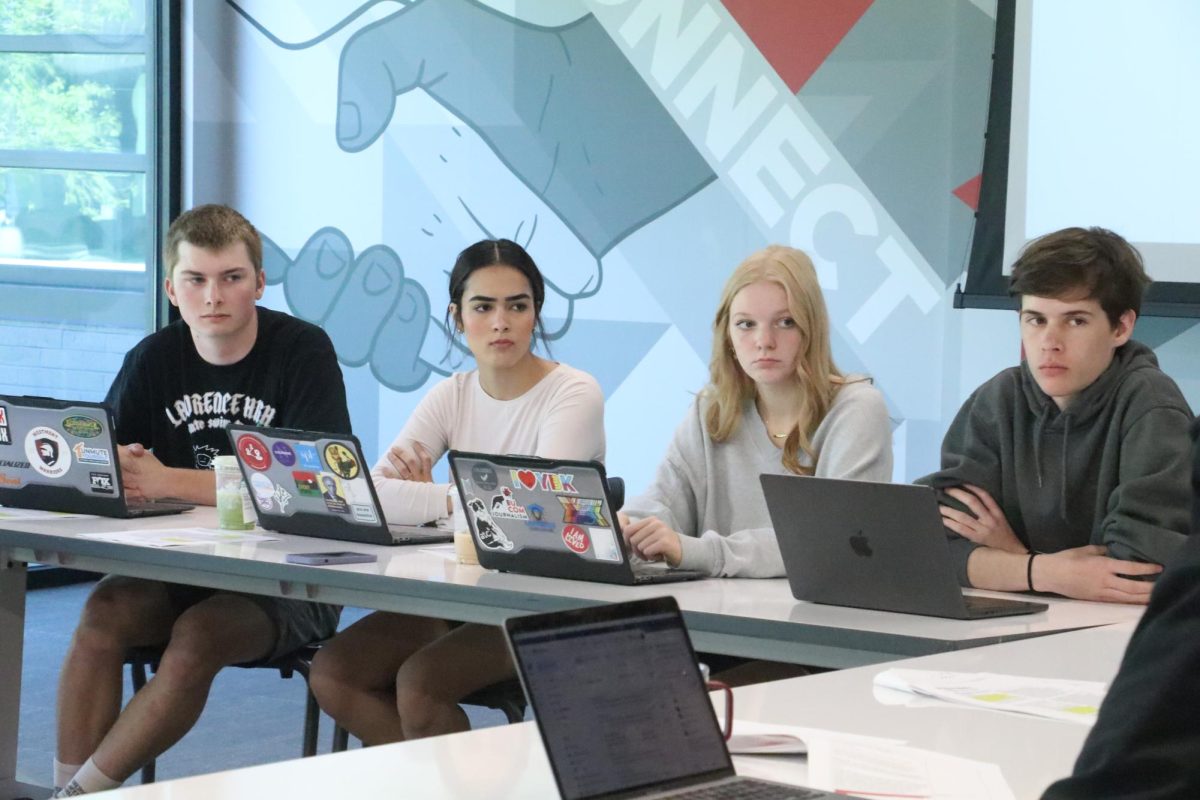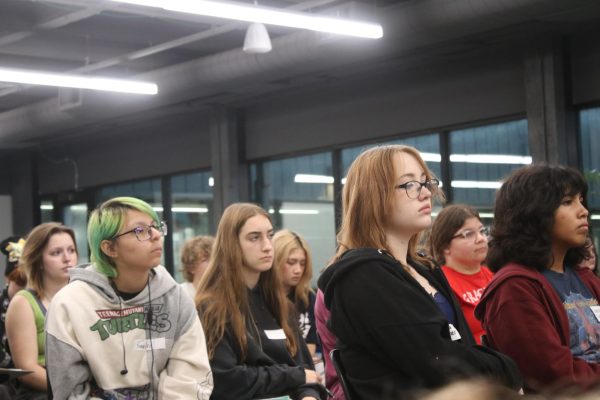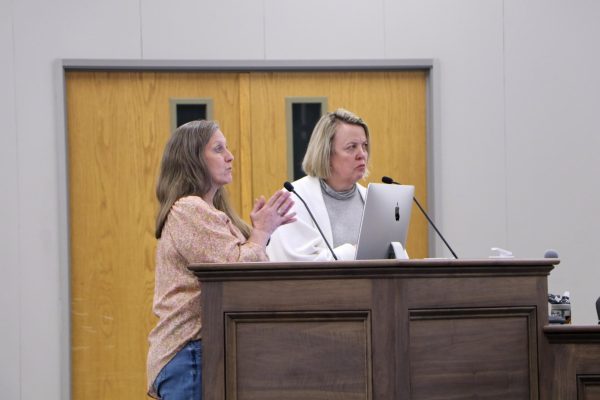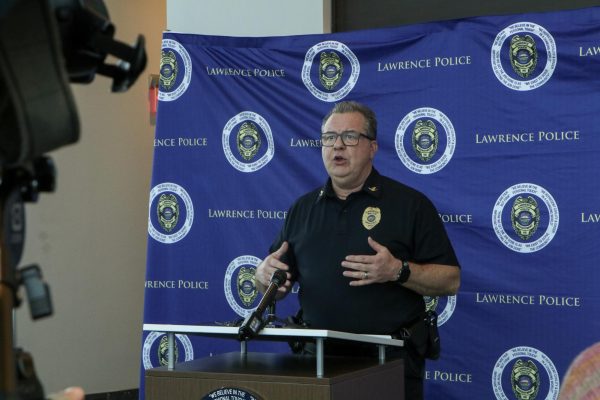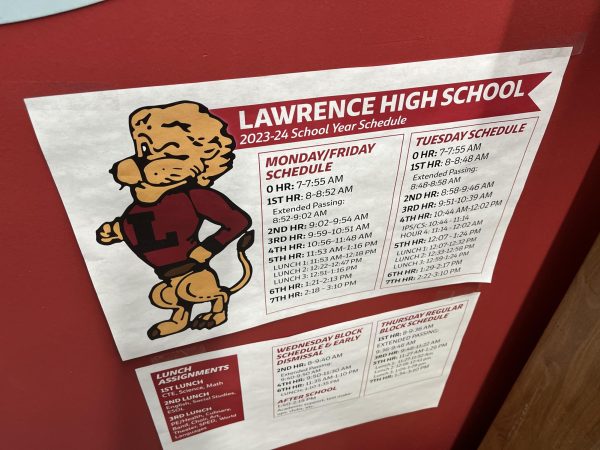Court says schools need more funding
State under pressure for failing to meet constitutional duty
February 4, 2015
Science teacher Jo Huntsinger prepares for her anatomy class by ordering 60 cats for dissection and grabbing a few of the 70 boxes of latex gloves the science department purchases for students. Fortunately the dissection spans a large portion of the spring semester, as the project consumes a large part of the annual classroom budget.
Huntsinger has been teaching and coaching at LHS since 1982, and she has seen some drastic changes to the school’s funding source.
“Things have really changed in the last 30 years,” she said. “We used to be able to get what we really needed, but now we have to be much more frugal. You can’t always get what you need for your classes.”
Educators across the state have struggled with the same issue, and recently the judicial system responded to their call.
In the final days of 2014, a Shawnee County district court panel ruled the status-quo level of state education funding is insufficient. The current funding was deemed, under state law, unconstitutional.
The decision is being appealed to the Kansas Supreme Court.
The Kansas constitution requires the legislature to allot enough money toward public schools that student performance standards are satisfied. But the district court decided that Governor Sam Brownback’s tax cuts have jeopardized this constitutional obligation.
“As we have analyzed, it is inadequate from any rational perspective of the evidence presented or proffered to us,” the court said.
State education funding dropped drastically after the economy tanked in 2008, causing the district to cut spending. The cuts were intended to be temporary and replenished when the economy improved, however, when state coffers began to refill as the economy improved, the money was not put back into education, but rather helped facilitate one of the largest state tax cuts in history.
According to district finance director Kathy Johnson, the district prioritizes its budget cuts by choosing what affects the classroom least. This often includes administrative duties, custodial work, student-to-teacher ratios, teaching positions and staff salaries.
“I’ve pretty much made the same thing since 2008, which is pretty much taking a pay cut since my salary has stayed the same for a long time,” Huntsinger said. “We don’t really get raises like you might in other professions.”
USD 497 lost $2 million in state aid for the 2014-15 school year due to a small piece of the funding formula. The district has been able to make up for some lost funds with an influx of students to the district.
Funding is tied to the base state aid per pupil — literally based on the number of students in classes. In addition, the state funding formula provides additional funds for students with special needs, who speak English as a second language, who receive free lunches, take career and technical education classes and so on.
Some legislators suggest that a new funding formula is necessary to accurately calculate district budgets.
In his State of the State speech, Gov. Sam Brownback elaborated on his intent to champion a new school funding formula.
“For decades now, Kansas has struggled under a school finance formula which is designed not to be understood, to frustrate efforts at accountability and efficiency,” Brownback said. “A formula designed to lock in automatic, massive increases in spending unrelated to actual student populations or improved student achievement.”
The block grant program Brownback went on to propose would lead to a $127.4 million cut in school funding.
Robb sees no problem with the current formula, but said the lack of money in state coffers is the issue.
“The courts did not find the formula unconstitutional,” he said. “To the contrary, they found the formula just fine. They found the underfunding of the formula to be the problem. Much like operating a car, you have to put gas in it. When it stops, you don’t need a new car, you simply need to put the appropriate amount of gas in it.”
To make up the difference, Douglas County has raised taxes for its local option budget (LOB). In principle, LOB funds are designated for supplemental education enhancement, but district officials say the money is used for more basic needs. The LOB is currently at its legal cap of 33 percent of the general budget thanks to a decision upheld by Douglas County voters in the recent mail ballot election.
However, the district court discredited the use of local funds as a source for the necessary yearly budget.
“The need to establish a fail-safe [funding source] is not an option if the LOB is to be relied upon as a pillar of constitutionally adequate funding,” the court opinion stated.
It is unlikely school districts will see immediate effects from the court decision, since the case is being appealed. Robb projects the process could take a year. However, he believes the state’s obligation to uphold the constitution will drive a positive outcome for schools.
“The courts are charged with interpreting the constitution,” he said. “Through a series of court cases going back 25 years the courts have said that the constitution places a positive duty on the legislature to adequately fund the schools. ”
This story has been updated from its original version to clarify the usage of the LHS science department’s annual budget. The cat dissection project spans the majority of the spring semester in Huntsinger’s anatomy course, and the 70 boxes of gloves are shared among the department. The beginning of the original version incorrectly cited the dissection unit as being a week long and the latex gloves solely belonging to the anatomy class.





